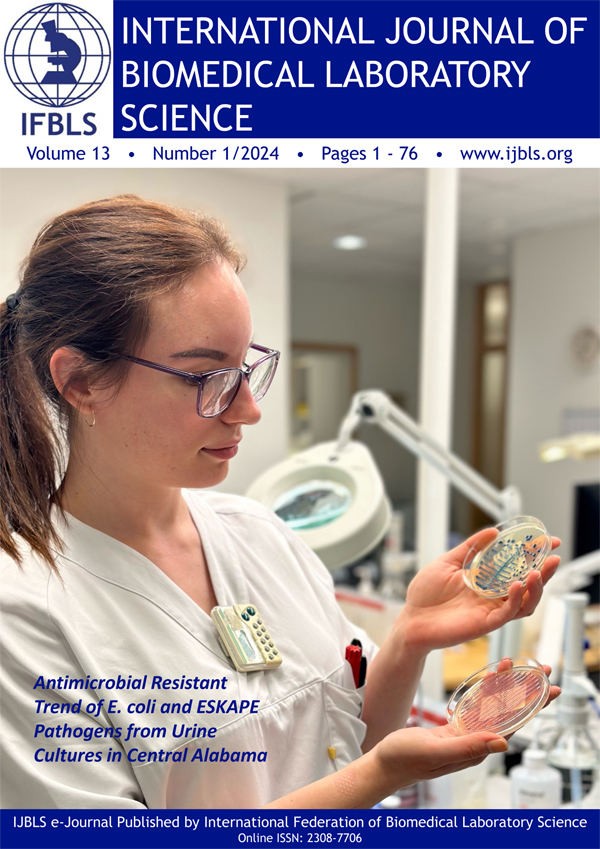Int. J. Bio. Lab. Sci 2011 1:7-14 【Abstract】 【PDF】
Abstract
Malaria reportedly accounts for 10% of Africa's disease burden and about 90% of the global morbidity and mortality affecting mostly children under 5 years old. Previous studies have ex-pressed varied opinion on the protection from severe Plasmodium falciparum malaria by α+-thalassaemia. A random cross-sectional sampling of 456 children at the Komfo Anokye Teach-ing Hospital (KATH), Kumasi, Ghana were tested for malaria parasite, complete blood count (CBC), serum ferritin, and α-globin genotype. Alpha (+)-thalassaemic children recorded a sig-nificantly lower (28,705/μL) mean parasite density (MPD) compared to non-α-thalassaemic chil-dren (35,483/μL) (p<0.0001). The homozygotes, α+-thalassaemia, recorded a significantly lower (691/μL) MPD compared to 26,350/μL for the heterozygotes and 35,483/μL for the non-α-thalassaemic children (p = 0.0001). Alpha (+)-thalassaemia was hypothesized to protect against malaria via a reduction in the parasite density. The homozygous α+-thalassaemias were more protective than the heterozygous. Microcytic hypochromic anaemia was found in 141 (59%) of the subjects of which 71 were α+-thalassaemia. Alpha (+)-thalassaemia was shown to be a possi-bly key contributor to microcytic hypochromic anaemia amongst cases that were suspected of iron deficiency. Suspected iron deficiency cases should therefore be screened for α-thalassaemia to avoid the unnecessary administration of iron supplement.
Key words: alpha+thalassaemia, malaria, RBC, microcytosis, Ghana


